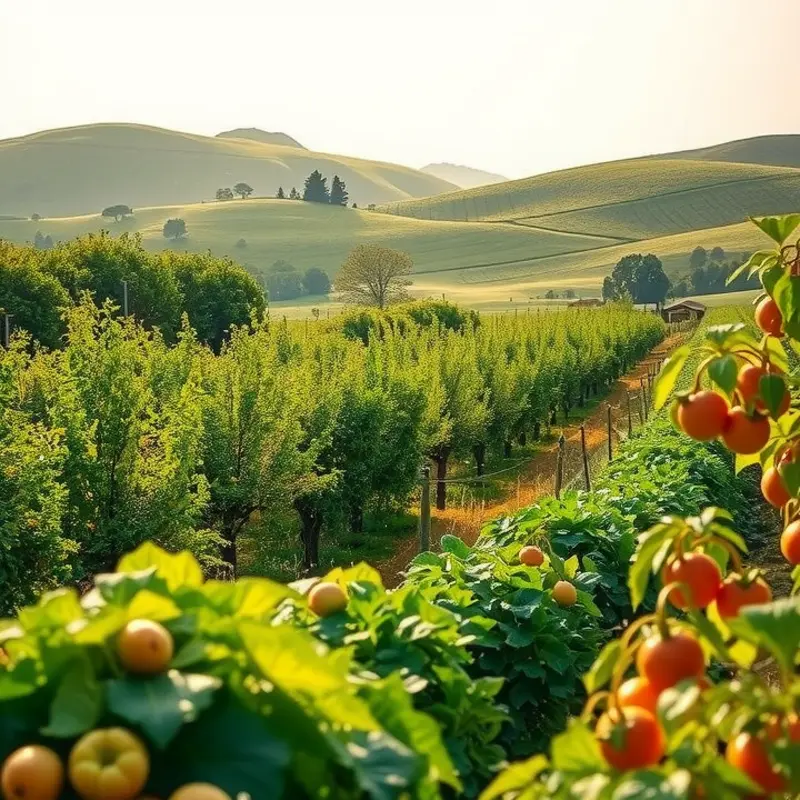Food has the power to transcend borders, weaving stories of heritage, history, and community through its flavors and aromas. Across the globe, culinary traditions are intricately tied to cultural celebrations—from the colorful plates of Diwali to the succulent roasts of Thanksgiving. These unique gastronomic experiences not only delight our taste buds but also serve as a means of preserving age-old customs and fostering connection among families and communities. Delve into the significance of traditional foods served during festive occasions and discover how these meals embody the spirit of unity and cultural pride.
Flavors of Festivity: Iconic Dishes Across Cultures

Across the globe, culinary traditions manifest in vibrant dishes that celebrate cultural identity and communal spirit. Distinctive flavors mark these festive meals, each embodying unique stories of heritage.
In Mexico, tamales are synonymous with celebration, particularly during holidays like Día de los Muertos and Christmas. Wrapped in corn husks, tamales encase a savory or sweet filling, often involving pork, chicken, or mole. The preparation is communal, rooted in indigenous traditions, and symbolizes the bringing together of family—a value deeply cherished in Mexican culture. The corn representing all of creation adds a layer of ancestral significance.
In Japan, New Year’s celebrations highlight osechi ryori, a meal comprising diverse dishes prepared with precise care. Each component carries symbolic meaning; for example, kurikinton (sweet potatoes with chestnuts) is associated with prosperity, while kazunoko (herring roe) symbolizes fertility. This auspicious spread reflects the Japanese value of omotenashi, or heartfelt hospitality.
In India, the festival of Diwali brings mithai, an array of sweets made from ingredients like milk, nuts, and spices. Each sweet, from ladoo to barfi, symbolizes joy and prosperity. The sharing of these sweets during Diwali signifies the spreading of happiness and goodwill, embodying principles of unity in diversity, central to Indian culture.
In the Easter traditions of Greece, magiritsa soup marks the end of Lent. This rich, lemony soup, made with lamb offal, symbolizes rebirth and new beginnings, resonating with the core themes of Easter. The tradition of breaking the fast together with this warm dish reflects the Greek commitment to family and community celebration.
China’s Mid-Autumn Festival is celebrated with mooncakes, round pastries filled with lotus seed paste or red bean. These cakes represent unity and harmony, a reflection of the festival’s celebration of family reunion. The intricate designs on mooncakes add another layer of artistry and tradition, showcasing the Chinese value of meticulous craftsmanship.
Across Scandinavia, the festival of Midsummer is accompanied by gravlax, cured salmon often served with dill and mustard. This dish, enjoyed during the longest day of the year, honors nature’s bounty and Scandinavias’ deep connection to their natural environment. The communal feasting outdoors highlights an appreciation for the shared joy of summer’s gifts.
These iconic dishes underscore how food acts as a language of celebration, rich with symbols and history. For those seeking to expand their culinary horizons, exploring the culinary influences of global trade offers insights into the evolution of these festive flavors. Through each carefully prepared bite, we participate in a tapestry of tradition, binding together the threads of past and present, near and far.
The Role of Food in Communal Bonding

Food has always played an integral role in fostering a sense of belonging. During cultural celebrations, it serves not only as sustenance but as a symbol of unity and inclusivity. Shared meals create a communal spirit, where the act of eating becomes a bridge between diverse individuals. Whether in formal ceremonies or casual gatherings, food fosters connections, nurturing both body and soul.
In many cultures, the process of preparing food for celebrations is just as significant as the meal itself. Traditional rituals often include entire families and communities coming together. In Greece, for example, the preparation of Easter lamb involves extended family members. Each has a role, from herding the animals to seasoning and cooking the meat over an open fire. This collaborative effort highlights the tradition of philotimo, a term that embodies honor, friendship, and hospitality. Such traditions emphasize the collective identity, where everyone contributes to and shares in the meal, reinforcing cultural ties.
Similarly, in India, weddings are known for their elaborate feasts, often called Sada Dosa, where families from both the bride and groom’s sides collaborate in the kitchen. Preparing the myriad of dishes becomes a communal task that strengthens family bonds and creates new ones. This process showcases the beauty of Indian hospitality and the significance of sharing food, reinforcing community norms and celebrating togetherness.
In Japan, the New Year’s feast, or Osechi Ryori, is prepared meticulously in advance, with each dish offering a wish for the coming year. Families gather to make these dishes, which symbolize prosperity, joy, and longevity. Osechi Ryori’s significance lies in preparation and consumption as a family, surrounded by loved ones. This reinforces familial bonds and the opportunity to reflect on the past and look forward to the future.
Moreover, in Middle Eastern cultures, the practice of offering tea and sweets to visitors is a nuanced representation of hospitality. During Ramadan, this gesture becomes more profound as individuals break their fast with friends, family, and, sometimes, strangers. Sharing this experience cultivates empathy and solidarity, promoting a sense of belonging and reinforcing social cohesion.
Food also plays a subtle yet profound role in informal settings, bringing together communities over potlucks, picnics, and barbecues. These gatherings, while not tied to a particular cultural or religious event, still provide a space for communal bonding. The casual nature allows for culinary experimentation and sharing of family recipes, which embed themselves in the communal narrative.
Inclusion around the dining table is a powerful instrument in breaking down social barriers. Hosting and sharing meals with others, regardless of background or status, embodies an ancient and widespread tradition of hospitality. The intent is genuine connection, fostering understanding and acceptance across cultural divides.
To further explore the diversity of global culinary traditions, visit this guide on pastry traditions. It offers a glimpse into how specific cuisines carry unique cultural signatures, each with its manner of forming communal bonds.
Thus, whether in the intimate circle of family or the broader community, food serves as a universal language of connection. It binds people, celebrating cultural differences and shared humanity.
Final words
Celebrating culture through food enriches our lives, offering more than just sustenance. It fosters connections, sparks stories, and retains the unique essence of traditions that define communities. Each dish, no matter how simple or lavish, carries the weight of history, shared experiences, and the spirit of togetherness that unites us all. As food enthusiasts and culturally curious individuals, embracing these culinary celebrations allows us to appreciate the diversity of the world—a journey through flavors that deepen our understanding of one another.







